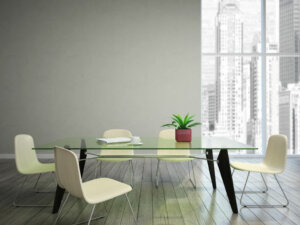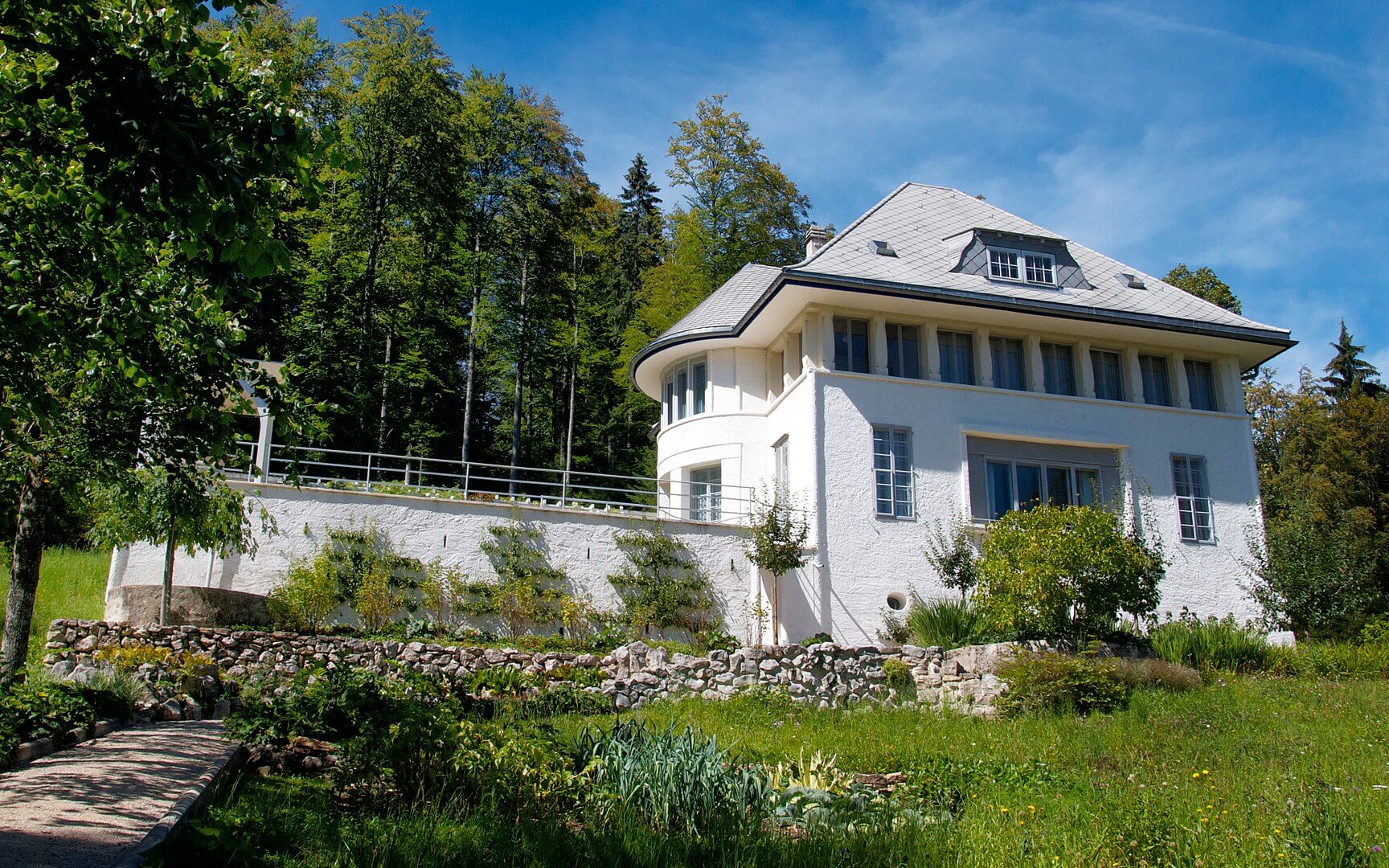LC6 Table by Le Corbusier and Its Avant-Garde Design

History has left us an artistic legacy of vital importance. Not only do you have to look at pictorial or sculptural works, but you also have to pay attention to the world of interior design where great architects have also worked. For this reason, we’re going to take an in-depth look at the LC6 table by Le Corbusier and its avant-garde design.
Many times, we hesitate when buying furniture. Sometimes, it seems like everything we see looks the same, and it’s hard to find something that stands out. Ideally, we look for other components that can be innovative and original.
To achieve this purpose, it’s important to know the great contributions that the rationalist tendency has left us with. It’s here where important pieces have been made that have a place in our homes today.
Le Corbusier and functionalism

Le Corbusier is known for having carried out highly relevant architectural projects; however, he’s also known as a designer of furniture for homes, offices, shops, etc.
His artistic vision is fundamentally linked to functionalism. This concept is constantly impregnated in his productions. It must be borne in mind that he stood out with his best works in the second decade of the 20th century, precisely when he made this chair we’re talking about today.
The basic and elemental principle of his work focuses on the purification of forms, especially under a utilitarian aspect of the elements that make up the home. In other words, his creations provide a practical and simple feel, without complications, whose only objective is to generate maximum comfort.
A work of art that’s part of the interior design.
The main features of the LC6 table
This table is undoubtedly an avant-garde design due to its different contents. It contrasts directly with any other piece of furniture that’s present in the home, but it’s also true that you can accompany it with chairs and other resources that have similar patterns. Let’s see, therefore, some of its characteristics:
- At first glance, the appearance is very simple. It’s made up of a very resistant steel structure, with cylindrical legs and a central link that joins both sides, providing the greatest possible stability. In this regard, it ensures durability and firmness.
- On the other hand, there’s the tabletop, which is completely smooth and elongated, with marked corners that form right angles. In addition, the thickness goes unnoticed, even generating a feeling of lightness.
- The material of the tabletop can be walnut or ash wood, either in its original color or painted. However, it can usually be found in transparent glass, which makes it much more dynamic and lighter.
- We can say that the LC6 is a table that isn’t a closed structure, but quite the opposite: It’s open and refined. In fact, the board protrudes from the ends like a cantilever. In this way, it favors adaptability in case a person sits right at one of the extremes.
The main purposes of Le Corbusier

What was Le Corbusier‘s purpose when making a design like this? The idea that he attempted to convey is that in order to obtain comfort, it’s not necessary to sacrifice the aesthetics of the home; that’s to say, with certain simple resources, one can live perfectly well.
An action as basic as sitting down for lunch or dinner doesn’t require anything more than a functional table. Basically, we only need a surface to set things down on and, in this case, Le Corbusier presents us with a prototype that meets our expectations.
In addition to this approach, another factor must be added: Artistic evolution. As the 20th century advanced, the Industrial Revolution had already been consolidated; some avant-garde movements had developed, and objectives were reconsidered to seek new horizons.
The sensations that it transmits
An avant-garde design like this transmits various types of sensations. On the one hand, the value of simplicity in accordance with current lifestyles where detail isn’t appreciated as much as functionality.
On the other hand, it’s worth noting how furniture like this generates a more serious, alternative, and subtle image. However, this doesn’t mean the decoration is bland, but we’re working on a more original and contemporary aspect.
History has left us an artistic legacy of vital importance. Not only do you have to look at pictorial or sculptural works, but you also have to pay attention to the world of interior design where great architects have also worked. For this reason, we’re going to take an in-depth look at the LC6 table by Le Corbusier and its avant-garde design.
Many times, we hesitate when buying furniture. Sometimes, it seems like everything we see looks the same, and it’s hard to find something that stands out. Ideally, we look for other components that can be innovative and original.
To achieve this purpose, it’s important to know the great contributions that the rationalist tendency has left us with. It’s here where important pieces have been made that have a place in our homes today.
Le Corbusier and functionalism

Le Corbusier is known for having carried out highly relevant architectural projects; however, he’s also known as a designer of furniture for homes, offices, shops, etc.
His artistic vision is fundamentally linked to functionalism. This concept is constantly impregnated in his productions. It must be borne in mind that he stood out with his best works in the second decade of the 20th century, precisely when he made this chair we’re talking about today.
The basic and elemental principle of his work focuses on the purification of forms, especially under a utilitarian aspect of the elements that make up the home. In other words, his creations provide a practical and simple feel, without complications, whose only objective is to generate maximum comfort.
A work of art that’s part of the interior design.
The main features of the LC6 table
This table is undoubtedly an avant-garde design due to its different contents. It contrasts directly with any other piece of furniture that’s present in the home, but it’s also true that you can accompany it with chairs and other resources that have similar patterns. Let’s see, therefore, some of its characteristics:
- At first glance, the appearance is very simple. It’s made up of a very resistant steel structure, with cylindrical legs and a central link that joins both sides, providing the greatest possible stability. In this regard, it ensures durability and firmness.
- On the other hand, there’s the tabletop, which is completely smooth and elongated, with marked corners that form right angles. In addition, the thickness goes unnoticed, even generating a feeling of lightness.
- The material of the tabletop can be walnut or ash wood, either in its original color or painted. However, it can usually be found in transparent glass, which makes it much more dynamic and lighter.
- We can say that the LC6 is a table that isn’t a closed structure, but quite the opposite: It’s open and refined. In fact, the board protrudes from the ends like a cantilever. In this way, it favors adaptability in case a person sits right at one of the extremes.
The main purposes of Le Corbusier

What was Le Corbusier‘s purpose when making a design like this? The idea that he attempted to convey is that in order to obtain comfort, it’s not necessary to sacrifice the aesthetics of the home; that’s to say, with certain simple resources, one can live perfectly well.
An action as basic as sitting down for lunch or dinner doesn’t require anything more than a functional table. Basically, we only need a surface to set things down on and, in this case, Le Corbusier presents us with a prototype that meets our expectations.
In addition to this approach, another factor must be added: Artistic evolution. As the 20th century advanced, the Industrial Revolution had already been consolidated; some avant-garde movements had developed, and objectives were reconsidered to seek new horizons.
The sensations that it transmits
An avant-garde design like this transmits various types of sensations. On the one hand, the value of simplicity in accordance with current lifestyles where detail isn’t appreciated as much as functionality.
On the other hand, it’s worth noting how furniture like this generates a more serious, alternative, and subtle image. However, this doesn’t mean the decoration is bland, but we’re working on a more original and contemporary aspect.
All cited sources were thoroughly reviewed by our team to ensure their quality, reliability, currency, and validity. The bibliography of this article was considered reliable and of academic or scientific accuracy.
- Droste, Magdalena: Bauhaus. 1919-1933, Berlín, Taschen, 1990.
- Emma, Callery: Enciclopedia práctica de la decoración, Everest, 2001.
- Walton, Stewart: Guía completa de decoración: 1000 ideas de diseño para el hogar, Blume, 1997.







